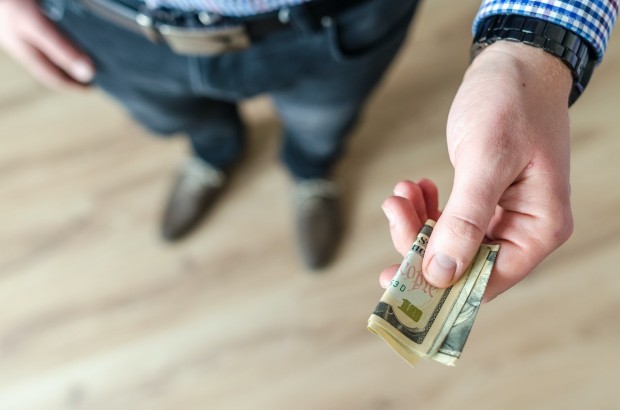Coronavirus and Banknotes: Low Risk of Contamination, Say Experts
Media and social networks have been arguing about the safety of paper money since the COVID-19 pandemic started. Opinions vary, but in fact, it does not matter how to pay: good personal hygiene is most important!
In early March, The Telegraph published an article. It stated with reference to a representative of the WHO that the World Health Organization was calling for cash withdrawals because banknotes transmit the coronavirus. The article received wide publicity amid the global panic over the infection's spread.
However, in just a few days WHO spokeswoman Fadela Chaib clarified that the message was misinterpreted: "We were asked if we thought banknotes could transmit COVID-19 and we said you should wash your hands after handling money, especially if handling or eating food."
The first message obviously falls into the category of sensationalism. As a matter of fact, banknotes are the same familiar object of the everyday world, and the best possible way to keep yourself safe is to observe the basic rules of hygiene.
"Medical evidence confirms that human-to-human transmission of the virus is correlated through close contact via respiratory droplets trigged from unguarded coughing and sneezing... Heightened hand washing campaigns stress that it is a critical component in infection control", says Dr Derek Watson of the University of Sunderland. It turns out that the most dangerous thing is not cash as such, but those who handle it - after all, people are the primarily carriers of the virus.
As for inanimate objects, the most dangerous ones are those that surround us in everyday life - door handles, sinks in public places, handrails in the subway, railings and so on, that is, everything that an infected person could touch. The virus can live up to three days on such surfaces, unless they are disinfected.
As for handling banknotes received from someone, it is enough to ensure a sufficient distance - because the virus is mainly transmitted by airborne droplets - and follow the usual hygiene rules, as if you touched a handrail in a bus: "It's not impossible that there might be traces of virus on dollar bill, but if you wash your hands it should provide adequate protections - you shouldn't need anything else," notes Julie Fischer, a professor at the Center for Global Health Science and Society at Georgetown University.
Getting back to the surfaces on which the virus lives, let's not forget the materials of which payment cards and terminals are made. Plastic and metal hold the virus much longer than paper does, and smartphones also used for payments are capable of hosting the infection for up to four days.
"Cash is not a good vehicle to transport respiratory viruses, however, cards have a little bit more potential," says Dr. Susan Whittier, a clinical microbiologist at New York-Presbyterian Hospital at Columbia University Medical Center. "If someone is coughing, and then they hand their credit card to someone across the counter, I wouldn't rule out the potential of transmission."
Specifically, the case can be confirmed with the coronavirus statistics compared to cashless payments numbers by country. The UK, USA, China, Germany and France are in the top 10 cashless countries and also in the top ten countries most affected by the coronavirus. Sadly, leaning towards cashless payments did not save them from the infection outbreak - the fact remains that inanimate surfaces are not the main way of catching the virus, says the US Centers for Disease Control: "It may be possible that a person can get Covid-19 by touching a surface or object that has the virus on it and then touching their own mouth, nose, or possibly their eyes, but this is not thought to be the main way the virus spreads."
The infection appeared recently and is still not understood well. There are many questions regarding it, and the main issue relates to the vaccine against the coronavirus. At the same time, we already know that the main way of transmission is close contact with an infected person, and the main "bridge" through which the virus enters the body is our hands. That is why governments around the world impose quarantines and WHO primarily recommends handwashing and social distancing: after all, it is not what you touch, but how thoroughly you wash your hands and how close you are to an opposite person.
See Now: NASA's Juno Spacecraft's Rendezvous With Jupiter's Mammoth Cyclone
* This is a contributed article and this content does not necessarily represent the views of scienceworldreport.com





Join the Conversation